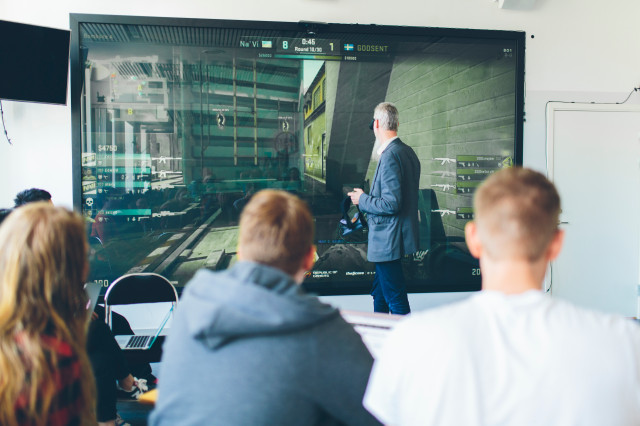- Overview of problems and methods in geometric computing such as image based visualization and automatic shape recognition.
- Basic algebra and geometry of imaging systems.
- Geometric basis of texture mapping.
- Mathematics and geometry of multiple views.
- Calibration and 3D reconstruction from multiple views.
- Methods for analysis of geometric shape.
- Robust statistics and matching problems.
- Methods for image-based rendering.
DD2429 Computational Photography 6.0 credits
This course has been discontinued.
Decision to discontinue this course:
No information inserted
Information per course offering
Course offerings are missing for current or upcoming semesters.
Course syllabus as PDF
Please note: all information from the Course syllabus is available on this page in an accessible format.
Course syllabus DD2429 (Spring 2019–)Content and learning outcomes
Course contents
Intended learning outcomes
After the completion of the course the student is expected to
- describe the research area of image-based 3D visualization and commercial systems for this,
- give an account for the mathematical and geometric foundations used in image-based 3D reconstruction and visualization,
- apply known methods for mathematical and numerical treatment of problems of geometric nature,
- implement methods for automatic extraction of geometric information from images,
- describe how a system for automatic creation of 3D models from known images might look like,
- describe the most common methods for image-based rendering.
Literature and preparations
Specific prerequisites
Single course students: 90 university credits including 45 university credits in Mathematics or Information Technology. English B, or equivalent.
Literature
Kompendium producerat vid institutionen.
Examination and completion
Grading scale
Examination
- TEN1 - Exam, 3.0 credits, grading scale: A, B, C, D, E, FX, F
- LAB1 - Laboratory Works, 3.0 credits, grading scale: P, F
Based on recommendation from KTH’s coordinator for disabilities, the examiner will decide how to adapt an examination for students with documented disability.
The examiner may apply another examination format when re-examining individual students.
If the course is discontinued, students may request to be examined during the following two academic years.
In this course all the regulations of the code of honor at the School of Computer science and Communication apply, see: http://www.kth.se/csc/student/hederskodex/1.17237?l=en_UK.
Examiner
Ethical approach
- All members of a group are responsible for the group's work.
- In any assessment, every student shall honestly disclose any help received and sources used.
- In an oral assessment, every student shall be able to present and answer questions about the entire assignment and solution.
Further information
Course room in Canvas
Offered by
Main field of study
Education cycle
Supplementary information
The course has replaced DD2428 Geometric Computing and Visualization.
The course is given in English if necessary.